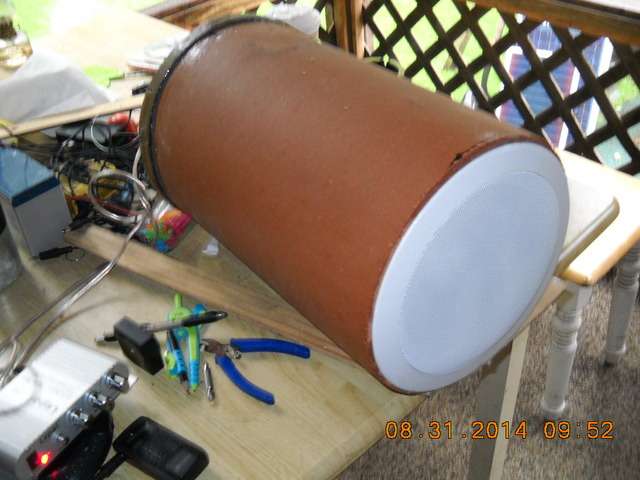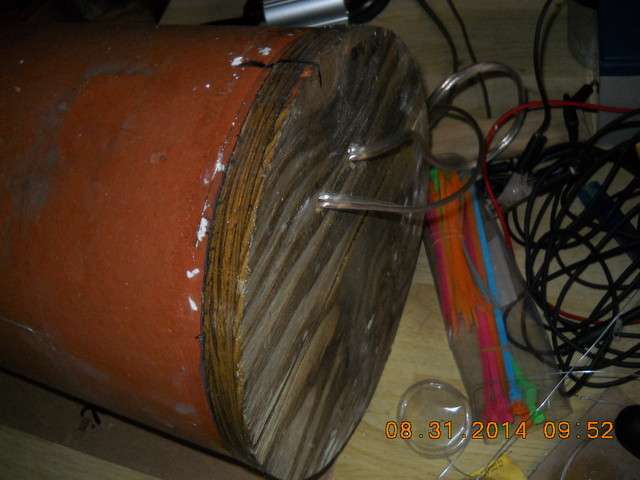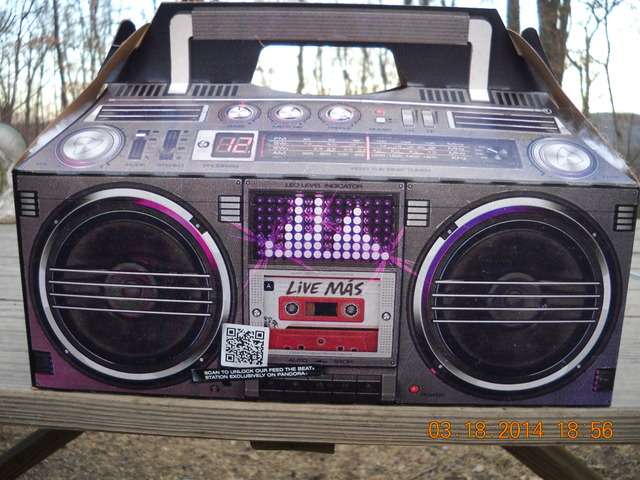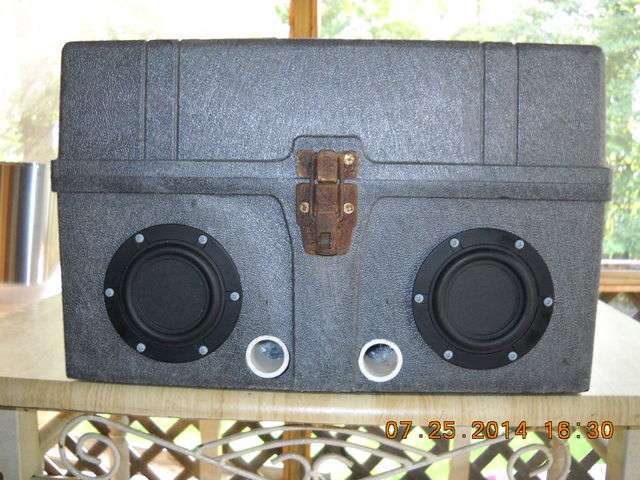FYI: in the US we spell it "cinderblock". Sounds the same, and you never know if it is S or C, but this is C.
Cinder is lumpy coal ash. Old cinderblocks were pressed from "fly ash", mostly non-coal residue. Modern "CMU"s are pressed from various materials, concrete, ash, and aerated concrete.
Concrete masonry unit - Wikipedia
"Sinter" is bringing powdered metals up very near melting and pressing firmly.
Yes, that price is very generous to the seller.
thanks for that 🙂 I'm native Dutch speaking and it's not a very common word 😛 Here in Belgium we can get them based on concrete and others based on Argex. The Argex once can be interesting for building speakers as it has sound blocking properties. No Idea if it is worth giving it a try but I must admit that it's kind of the cheapest housing you can probably buy 🙂 the weight 13 kg so with speakers, front, rear around 15 kg ...
"Blocks" are of course made as cheap as possible for the load. At my homeowner store there are light "cinder" blocks for small light work, and a heavier "concrete" block for stronger structure at 2X the price.
Expanded clay. I have not seen that here. Interesting because I have clay! But no way to bring it over 1000 degrees C to make it "puff". Probably depends on a certain type of clay very close to energy and transportation.
They say Argex is sound-fill but Cellotex also says "acoustic". I can't see anything wrong with plain concrete-like block. While some sound will come through a large thin wall, in most cases tiny cracks leak far more sound than the block. In one solid block, your front/back seals and the speaker cone must pass more sound than block walls, even light-weight.
Expanded clay. I have not seen that here. Interesting because I have clay! But no way to bring it over 1000 degrees C to make it "puff". Probably depends on a certain type of clay very close to energy and transportation.
They say Argex is sound-fill but Cellotex also says "acoustic". I can't see anything wrong with plain concrete-like block. While some sound will come through a large thin wall, in most cases tiny cracks leak far more sound than the block. In one solid block, your front/back seals and the speaker cone must pass more sound than block walls, even light-weight.
Wouldn't "glass" be dependent upon the formulation of that exact type of glass and it's inherent specific density and other material attributes??
in the US we spell it "cinderblock".
In the UK, its a breezeblock, in Oz, besser block
At least in the 70's young people (like me) with little cash made furniture from cinder blocks and plywood. It's cheap, easy to tear down when it's time to move, and can support a LOT of weight.
In my case I covered the wood and concrete with the same naugahyde and crushed velvet seen in my 70's era speaker cabinets. My stereo rack, music keyboard stands, and workbench were all made using this technique.
$14 Single Point Stereo Ceiling Speaker, a section of 8" sewer pipe, (14" gave me the internal volume I wanted) A chunk of 3/4" plywood to cover the opposite end, and a tube of silicone sealer. Lined the i.d. with some cotton batting and WALA!




When I was a kid, my dad rigged up an old bongo drum speaker that was mounted on the ceiling of our VW bus, between the front seats...
OSB ... quit a few people used it for making speakers ... I'm not very sure if a good idea. I know it is wood based butt it's not very nice to do fine woodworks. Chips sometimes come off etc.

this one has a nice finish
An externally hosted image should be here but it was not working when we last tested it.
this one has a nice finish
You can put 1k HP in your Westy for all I care, but it will only work until the first corner.
True but it would look great sitting in my garage 🙂
OSB ... quit a few people used it for making speakers ... I'm not very sure if a good idea. I know it is wood based butt it's not very nice to do fine woodworks. Chips sometimes come off etc.


this one has a nice finish
With a finish it looks surprisingly good.
so ... Sinterblocks ... what do we think about this ... kit is for sale for about 150 usd, Sinterblock you need to buy all by yourself.
I think it is doable on a budget 🙂 for much less ... not sure if it is on hifi standards a very good idea 🙂
An externally hosted image should be here but it was not working when we last tested it.
Pretty neat idea for sure.
I used cement bonded particle board in my first and only build, over 30 years ago. Added advantage...you don't need to search for weights if you want to do some body building.
I used cement bonded particle board in my first and only build, over 30 years ago. Added advantage...you don't need to search for weights if you want to do some body building.
Great thinking. I like to listen to music when I lift weights. This takes that to another level. 🙂
Pretty neat idea for sure.
I really like this, what a great way to make a very effective enclosure. I wonder if there might be some way to finish it so it looks even better.
With a finish it looks surprisingly good.
I am a fan of OSB shelves, I just tore some out I built 20 years ago. They were finished w/ spar varnish and had a yellow/gold color.
Just about every time I looked at them I thought about speaker cabinets finished in clear colored lacquer.
- Status
- Not open for further replies.
- Home
- Design & Build
- Construction Tips
- Strangest Box Material You used or Have Seen?


